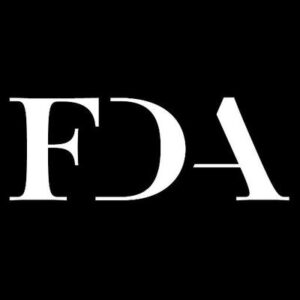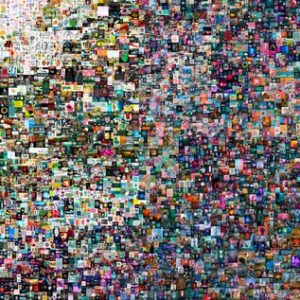
Fondation pour le droit de l’art
Last week, our founder Leila Amineddoleh spoke at an event hosted by the Art Law Foundation titled Non-Fungible Tokens in the art market: the beginning of a digital art boom? The event was organized and moderated by attorney Anne-Laure Bandle, Director of the Art Law Foundation and co-founder of the Responsible Art Market initiative. Other panelists included Gabriel Jaccard, a legal scholar in the field of smart contracts and Co-Chair of the Regulatory Working Group Crypto Valley, and Garrett Landolt, a Postwar and Contemporary Art Specialist at Christie’s auction house. This multidisciplinary group of speakers presented varying perspectives on NFTs and the art market, demystifying this new asset class for the audience.
After Gabriel explained the technological aspects of NFTs, Leila stressed the importance of understanding and drafting contractual terms relating to them. As digital assets, NFTs fall outside traditional frameworks of property law and art sales agreements. In conventional transactions, a buyer will purchase a work from an artist or on the secondary market and receive a tangible object. With NFTs, it is not always immediately clear what the collector is buying or what rights they will be allowed to retain and exercise. A digital token can exist separately from a physical work of art or contain rights to a unique digital artwork that does not have a physical counterpart. Each situation will carry different rights for the creator, the seller, and the purchaser. For instance, a variety of options are available for the protection of artists’ moral and intellectual property rights, although this is complicated by the fact that such rights vary between countries. (A prior blog post examines moral rights and NFTs.) As this is a rapidly developing field, contracts will need to adapt to the rapidly changing technology and art market.
Gabriel noted that NFT sales are governed by smart contracts embedded within the purchased tokens that are programmed to operate automatically. (These contracts work similarly to a vending machine, which is programmed to release an item when a buyer inserts payment). However, as NFTs are a recent addition to the legal world and are usually more expensive than chips and soda, parties are still struggling with how to draft contractual terms that program the tokens effectively. Without clear legal precedent to inform these agreements, questions have arisen as to how the trade in these assets will develop. Depending upon the limitations the seller wishes to place on the NFT (such as commercial use and publicity restrictions), the parties may approach sales as straightforward exchanges of goods, as more complex licensing agreements, or even as hybrid contracts that incorporate these two forms. In any case, the parties’ rights should be clearly specified and memorialized in an agreement in order to avoid future legal challenges. Another critical matter to consider is the potential conflict between private contract provisions and the terms of services on an NFT platform. Although it is unclear which terms will prevail in the event of a dispute, including protections in the agreement will help safeguard the parties and help enforce their rights.

Source: Christie’s
As a complement to the legal discussion, Garrett provided an exclusive account of the now famed March 2021 Beeple sale, which drew 22 million visitors to Christie’s website during the final minutes of the auction. This unprecedented traction perhaps suggests that NFTs are a more desirable (or at least more accessible) asset class for Millenials than the traditional art market sphere: bidders for Beeple’s “Everydays” averaged 36 years old. Garrett also indicated that while Christie’s had an excellent start, this sale was a learning experience for future transactions. The auction house plans to pursue NFT sales and will offer blockchain-embedded works called Cryptopunks in an upcoming auction. It remains to be seen whether NFTs will be treated as a luxury asset, but Christie’s will remain selective with the items chosen for auction.
As part of the event, Anne-Laure then moderated audience questions. The first question concerned recommendations for potential purchasers. All the panelists agreed that purchasers should perform due diligence in advance of transactions to ensure that they fully understand what is being purchased, their respective rights, liabilities, and potential legal implications. Proceeding with caution is necessary to avoid pitfalls. Gabriel further noted that purchasers should verify whether the relevant contract addresses their needs, depending on the purpose of the transaction (investing versus collecting). Another question concerned the reception of NFTs by financial institutions as collateral for loans. Gabriel stated that NFTs currently represent a high-risk ratio and as such, financial institutions are hesitant to use them as collateral. However, this could change in the future if NFT-related transactions become more common, and smart contracts could potentially be used as collateral. It is worth noting that financial institutions must also comply with anti-money laundering (AML) regulations, which were recently extended to antiquities dealers in the US and already apply to art market participants in the EU and UK. If financial institutions apply the new regulations to NFT transactions, these institutions will need to conduct diligence regarding the identity of the work’s ultimate beneficial owner. This requirement might mitigate the anonymity provided by the Internet and ultimately discourage certain NFT buyers.
The legal landscape surrounding NFTs continues to develop. Collectors, artists, and other art market participants are wise to obtain legal counsel from experienced professionals with an understanding of this new asset class. At Amineddoleh & Associates, we have a strong track record representing artists, collectors, and galleries at all stages of art transactions. We have served as legal advisors on a number of high-profile NFT transactions, and we are currently working with Nifty Gateway and Monax, as well as with artists and their estates. We relish the opportunity to continue work in this developing area. We are proud to be at the forefront of legal work for this exciting new asset in the digital, artistic, and legal fields.